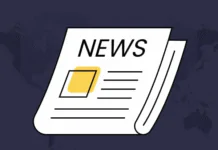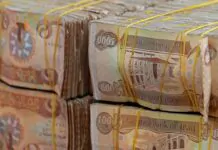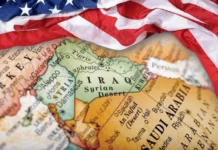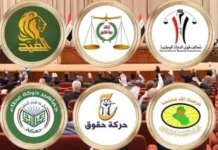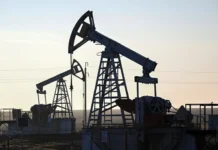Oil Prices Stabilize Amid Demand Concerns
Economy | 09/19/2025 Mawazine News – Follow-up: Oil prices stabilized on Friday, after ending the previous session lower, due to concerns about weaker fuel demand in the United States, following the US Federal Reserve’s decision to cut interest rates for the first time this year.
Brent crude futures fell one cent to $67.43 a barrel, while US West Texas Intermediate (WTI) crude futures fell four cents to $63.53 a barrel.
Both benchmarks are on track for a second consecutive week of gains, despite pressure from US inventory data.
The US Federal Reserve cut interest rates by a quarter percentage point last Wednesday, indicating the possibility of further monetary easing in response to signs of weakness in the labor market.
While lower borrowing costs typically support oil demand, a rise in US distillate inventories of more than 4 million barrels, compared to expectations of a 1 million-barrel increase, increased concerns about demand in the world’s largest oil consumer, pressuring prices. https://www.mawazin.net/Details.aspx?jimare=267030
Iraq: Between Yesterday’s Challenges And Reform Opportunities: A Reading Of Economic Transformations Under The Al-Sudani Government
Written by Dr. Saleh Mahoud Salman / Advisor to the Prime Minister The Iraqi economy is not just budget numbers or data issued by financial institutions. Rather, it is the story of a country that has suffered for decades from successive crises that have impacted people’s lives and daily livelihoods.
Since the 1980s, Iraq has been mired in a cycle of wars and sanctions, which excluded its banks from the global financial system, weakened its ability to attract investment, and led to near-total dependence on oil revenues.
After 2003, despite greater openness to international markets, a significant portion of the banks remained mere “fronts” for selling currency through the central bank’s windows, unable to practice modern banking. Meanwhile, public companies remained a heavy burden on the budget, without generating a productive return commensurate with the resources they consumed.
This bleak picture is accompanied by other problems, most notably high unemployment and poverty rates, weak productive sectors, heavy bureaucracy, and corruption that has drained the state’s resources.
In the face of these complex challenges, Mr. Mohammed Shia al-Sudani’s government program came with a set of central priorities, foremost among which was economic reform, along with reforming the banking system, activating electronic payments, completing the unified treasury, improving the business environment, and reforming the tax and customs systems.
Thus, Iraq began to prepare for a new phase, after the government realized that continuing with the old approach was no longer a viable option.
Hence, the need to confront the heavy economic legacy that had shackled the country for decades emerged. The economy remained captive to oil rents, while the agricultural and industrial production sectors declined, and unemployment and poverty rates rose.
Perhaps the first step was to reconsider the role of public companies and the government apparatus. Supreme committees were formed to restructure them according to a new philosophy that made the state a “manager, not an owner.” This represented the beginning of a comprehensive reform process that paved the way for a more resilient economy.
While these efforts were related to the institutional structure, fiscal reform represented the other side of the process. The adoption of a three-year budget (2023–2025) was not merely an accounting measure; it was an unprecedented step that focused on investment spending rather than operational spending.
It was accompanied by the launch of tax reform packages aimed at increasing collection by 30 percent by 2025. With the adoption of a unified treasury and the shift to automation and electronic payments, these decisions quickly reflected in revenues, which recorded a significant jump of more than 100 percent compared to previous years.
While budgetary control was essential, financial sector reform alone is insufficient without addressing the backbone of the economy: the banking system. This is where the launch of the new trade finance platform in November 2022 changed the nature of banking in Iraq.
By linking foreign transfers to private banks under the supervision of the Central Bank, the parallel market was regulated, and the difference between the official and parallel rates was reduced by more than 60 percent.
In parallel, the restructuring of Rafidain and Rashid Banks began with international support, transforming the banks from mere currency brokers into modern financial institutions. The US Treasury even described this step as a “historic achievement.”
From the womb of these banking transformations emerged the electronic payment experiment, which quickly became the most prominent reform initiative.
Once government departments were required to use it, the experiment expanded to include the private sector, with the number of points of sale increasing from 10,000 in 2022 to 50,000 in 2025, and the volume of monthly payments jumping from 90 billion dinars to more than 500 billion.
The number of bank cards also increased to 22 million, and the financial inclusion rate jumped from less than 10 percent to 40 percent in just three years—an achievement the World Bank considers unique compared to stable countries that took a full decade to achieve what Iraq accomplished in two years.
Because money requires an environment that can absorb it, it was only natural for reforms to extend to investment and infrastructure. Thus, the “Development Road” project and the Grand Faw Port were born as symbols of an economic future linking the Gulf to Europe.
Meanwhile, agreements were signed with the World Bank to finance railway, energy, and water projects. Internally, Iraq began localizing pharmaceutical and construction industries and launching industrial projects of various sizes, in addition to launching solar energy initiatives in factories to relieve pressure on the national grid.
Reforms have thus become more comprehensive, extending beyond finance and banking to the production and development infrastructure.
While plans and policies are important, numbers remain the most reliable witness to the magnitude of the transformation. Foreign reserves rose to $106 billion in March 2025, up from $86 billion at the end of 2022, a growth rate of more than 12 percent.
Gold reserves increased from 130 tons to 163 tons during the same period, an increase of 25 percent. Inflation declined from 7.5 percent to 2.7 percent, reflecting tangible monetary stability. In the banking sector, the number of accounts doubled from eight million to twenty million, and the number of bank cards increased from sixteen to twenty-two million.
The electronic payment infrastructure also made a significant leap, with points of sale increasing from ten thousand to fifty thousand, and monthly payments increasing by 460 percent.
These indicators did not stop there. The gap between the official and parallel rates decreased by more than sixty percent, and the financial inclusion rate rose to forty percent, from less than ten percent just two years ago.
International financing agreements worth $1.2 billion were signed, and tax revenues increased by about thirty percent in 2024 compared to the previous year. In the field of digital transformation, the “UR” electronic portal and e-passport were launched, and authentication procedures were eliminated through the secure documents system, which processed more than fifteen million transactions.
In customs, revenues rose to 2.131 trillion dinars in 2024, compared to 1.03 trillion dinars in 2023, an increase of 106%, and a growth rate of 128% compared to pre-2022.
The transformations were not limited to finance and revenues, but also included development initiatives. The Central Bank and government banks launched programs to support housing, renewable energy, youth entrepreneurship, and industrial cities, and the Iraq Development Fund was established as a new financing arm.
In the industrial sector, practical steps were taken to localize the pharmaceutical and construction industries, various production projects were launched, and initiatives were launched to equip factories with solar energy, in addition to signing agreements with global industrial associations.
Despite all these results, it is undeniable that the road ahead is still fraught with challenges. Oil remains the backbone of the budget, and bureaucracy and corruption remain major obstacles to consolidating reform.
Nevertheless, the government’s goals for 2026 appear both ambitious and realistic: reducing dependence on oil to less than 85% of revenues, reducing the fiscal deficit to less than 3% of GDP, improving Iraq’s credit rating, and completing the digital transformation of public finances.
Iraq today stands at a historic crossroads. After decades of crises and turmoil, reforms have begun to transform into tangible facts, evidenced by numbers and indicators.
While the road is still long, what has been achieved in a short period of time proves that change is possible when there is political will and a clear vision.
Iraq has begun to take steadily steps toward a more diversified and resilient economy—one that places people at the heart of development and gives future generations hope for a nation capable of rising again. https://economy-news.net/content.php?id=60195
For current and reliable Iraqi news please visit: https://www.bondladyscorner.com
